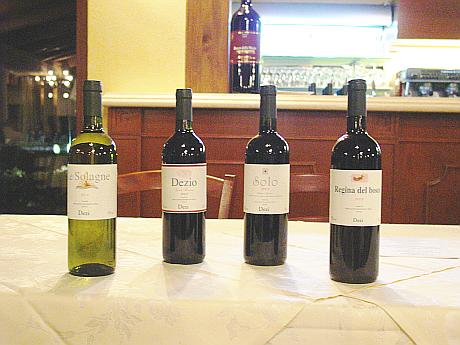
La Solagne, Dezio, Solo, Regina del Bosco
On a temperate June evening three years ago, I was having dinner with my friends and guests, Stephen Bradley, then British Consul General in Hong Kong, and Count Florian Von Hirsch, a merchant banker from Bavaria and London. We had chosen the I Piceni Restaurant, in the hilltop village of Ortezzano, with its fine views of the snow-capped Sibillini Mountains, the dark blue line of the Adriatic and below us the long valley of Val D’Aso. Olive groves, orchards and vineyards were already fading into shadow as the twilight deepened. The night air was fragrant with flowers. We were tired and hungry after our afternoon’s tramp through the Le Marche countryside. As Stephen and I pored over the tantalising menus, Florian had taken on himself the more pressing business of choosing what wine we should consume.
“This one,” he said decisively, his finger pressing the page.
“La Regina del Bosco,” murmured the waiter approvingly. “A good choice. A very good choice,” he added.
“Sounds very regal, Florian,” said Stephen.
Florian shrugged. “It is probably just another Rosso Piceno.” That was the generic name for the local wine we had been drinking during the last few days. I had filled several flagons from a pump in one of the roadside cantinas near Offida. It was easy on the palette, but like the food in this part of Le Marche – the heavy polenta and lasagne, pecchorino cheese, pasta, lamb and fennel, spicy prosciutto and wild boar – there was a rustic solidity about it. Le Marche’s charm is its blend of poet’s landscape and peasant traditions. Many people come each year to find an escape in what the tourist brochures call “Italy’s best kept secret.” It’s a step back in time, but the mediaeval world one finds oneself in is that of the contadini or peasant… Food is by definition ‘slow.’ So is everything else. But over the last few days we had adjusted to this pace of life and were quite comfortable to be without any expectations.
We had just tucked into the spinach ravioli when the waiter came and poured the wine
“It’s not bad,” said Florian. There was a look of surprise on his face.
“It’s not bad at all,” echoed Stephen, frowning.
I held up the dark liquid in the bowl. It was so dense it was ink-like, with only a few flecks of ruby caught by the candlelight. I sniffed. Its bouquet was nothing out of the ordinary. Then I sipped and started at the sharp tannic sensation on the tongue, but almost immediately any hint of acidity was suffused in an explosive burst of forest flavours – cherries, berries, plums, and other mustier ones that I could not recognise. They seemed to grow in strength as the wine swirled round my cheeks, leaving a subtle afterglow of crushed scents, that lingered in the mouth long after one had swallowed.
“Not plonk,” said Florian.
“Certainly not,” I said. I filled my mouth again. I had never experienced such a sense of physical texture in a wine, as if it was not liquid but fine cloth or leather. I had a sudden vision of gleaming wooden cabinets and shining palace floors – all the while new tastes were emerging like proud courtiers or shy debutantes presenting themselves to a prince – or a queen.
“Regal is right,” Stephen murmured. “If I didn’t know any better I’d say this was a grand vin.”
Florian was waving at the waiter to bring the bottle. He laughed when he saw it. With his hand over the label, he smiled archly at each of us in turn. Then, taking his hand away, he said, “Then who do you think IS the grande dame, this queen of the wood?”
We leaned our heads into the candlelight to see better. On the white label above the legend was a picture of a tiny bird.
“It’s a kingfisher,” I said in astonishment.
Stephen had his glasses on. “No, look at the pointed bill and the wedge tail. Well. Well. I know what it is. It’s a bee catcher, a little bee catcher. La regina del bosco must be the colloquial Italian name for it. There’s modesty here as well as charm, and a most ironic sense of humour. You know, this is a grand wine, in every way.”
Florian slowly nodded. “I can think of several London clubs which would consider it an honour to have a wine like this on their table.”.
As the pasta came and then the lamb and the fish and finally one of I Piceni’s magnificent dolce, the little bee catcher accompanied us throughout. I can’t remember whether we ordered one more bottle or two – but Florian seemed quite sober as we drove on the empty, moonlit roads through the Val d’Aso and up another mountain to my home.
Later that summer, when there were different guests and I was looking for a special wine for my table, I remembered the Queen of the Wood and her magnificent mantle of taste, but I could not find it in any of the shops around us and all my enquiries about where it was made foundered. I persevered. It took a few weeks but eventually I found three bottles in a wine shop by the gate that leads out of the piazza in Amandola. And when we drank them I found the wine was as superb as I remembered.
A year passed. I was back in Le Marche again. I had still not lost my hope that one day I could find the cantina where this excellent wine was made. There were many quality wines in Le Marche – the Verdicchios, some of the wines of Conero, one or two of the more expensive Offidas – but none that had got under my palette like the little bee catcher. The long summer passed. It was on the last day of the holiday that I was talking to my neighbour, Emidio, Force’s expert on jazz and good food. As usual he was dressed in shorts and vest. His white straggly beard hung over his chest and his hair was drawn back in a pony tail. Dark shades covered his eyes but could not hide the humour of his expression. He was standing with his big dog on the broken masonry outside his house while I stood by my front door in the narrow alley below. Our conversation perambulated as usual over several subjects before settling on food and drink. I told him of this wonderful wine that had eluded me.
His look was deadpan. “La Regina del Bosco? From the Dezi winery?”
“Yes, I think that’s the name on the bottle. Don’t know where it is, though.”
“It’s over there,” he said. He was pointing towards a range of hills.
“Where?” I thought he was fooling me.
“There,” he said. “Servigliano.”
I was stunned. “That’s only five kilometres away,” I said.
“Yes.”
“You mean all this time… My God, can we go there?”
“Yes.” A wide grin was crossing his cheeks. He made an ironic bow.
“Now?”
“Your car or mine?”
In five minutes we were racing down the hill. The coastal plain unfolded. We crossed the Ponte Maglio, then up through fields of sunflowers to Santa Vittoria in Matenano, and down again through farmland towards the ancient walled city of Servigliano, above which, within spitting distance was my elusive winery, which now I realised I had driven past more times than I could remember without being even aware that it was there.
The stocky figure of Stefano Dezi stepped out of the family’s ivy covered house, the keys to the cantina in his hand. On the table before me stood four bottles – the great Regina del Bosco, made from the finest Montepulciano grapes in our own local soil; another grand wine, Solo, made from the gentler Sangiovese; a blend, Dezio, which sold at a cheaper price and which Stefano generously marketed as a vin ordinaire – like all his wines it was more than that, much more; and finally there was a white, Solagne, which afterwards I was to discover was as good a companion to seabass or any other fish as I had drunk anywhere. There were smaller, thinner bottles too, containing the Dezi olive oil, as grand a vintage in its way as the wines. Stefano was splashing some of the oil onto the dry bread that would accompany our tasting.
Deftly he opened the bottle of Regina and rinsed it round a tall glass before pouring. I looked up at the paintings on the walls, between them the framed plaques and citations, and all the prizes dating backing decades.
I realised that the man pouring for me had in 2008 been voted Italy’s Best Wine Maker of the Year, of course, for La Regina Del Bosco, my local wine.
Please click on thumbnails below to scroll through the gallery:
- Dezi Winery, Le Marche
- Dezi Winery – on the vine
- A wander through the vineyard – Dezi Winery
- Remo Dezi and his two sons
- Welcome to Dezi Winery
- Stefano Dezi and Adam Williams
Dezi Winery
- Winner “Italian Wine Maker of the Year 2008”
- Dezio, Solo, La Solagne, Regina del Bosco
- Visit the Cantina for Tastings, Demi Johns, Half Cases.
History
The Dezi Winery was started in the 1950s by two brothers, Romulo and Remo Dezi in farmland that has been in their family since the 13th Century. The family motto has always been that wine is one of the greatest pleasures in life.
Today, the family continues to promote this philosophy, striving to produce quality grapes in the vineyard and ultimately, superb wines in the cantina.
In recent years, Remo’s son, Stefano Dezi, has gone to great lengths to convince his family that they needed to work harder in the vineyard, refurbish the cellars and purchase expensive French oak in order to put their winery on the map.
The Dezi winery now plays a distinct role in the panorama of quality winemaking from the Marche region. In 2008 Stefano Dezi won the industry’s most prestigious award and became Italian Wine Maker of the Year
Address
Behind walled town Servigliano up hill towards Curetta, Sant Vittoria.
14 Contrada de Fontemaggio
Tel/Fax: 0734 710090/ 348 4930312
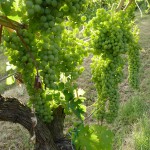
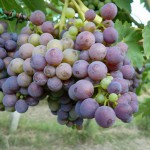
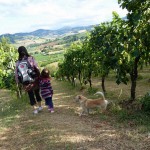
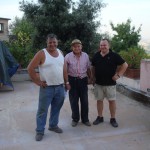
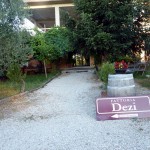
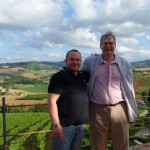


Love this wine.
A really beautifully told tale and I agree that it is a truly wonderful wine of which there are indeed many in Le Marche. The bird however is not a bee eater but the Woodcock.
Thank you for a well written piece on our neighborhood. We have also driven through this area many times without noticing the Winery. But next time we go, we’ll stop by and see if we can get a glimpse of the queen of the woods. So far I have enjoyed more the white wines of Le Marche like the ones made on verdicchio, paserina and pecorino grapes, the average rosso piceno don’t always inspire stories like the one written by you.
grazie per la bellissima descrione un abbraccio forte ci sentiamo presto